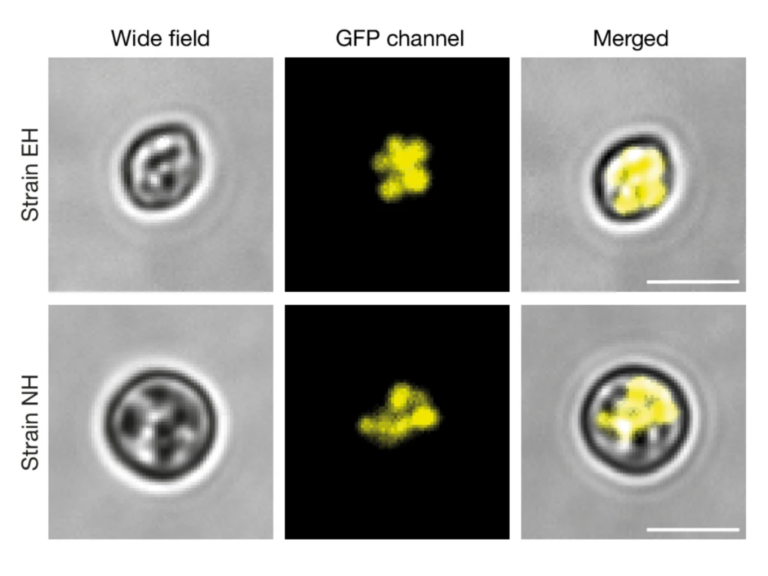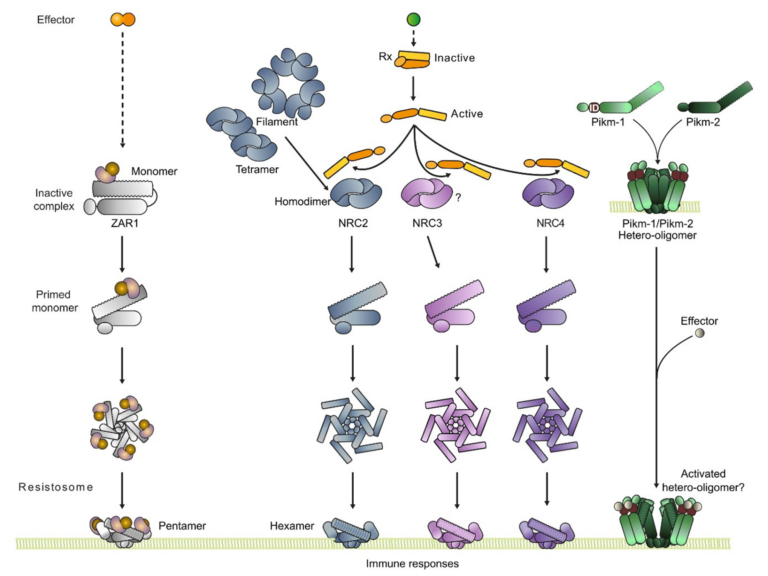A molecular mechanosensor for real-time visualization of appressorium membrane tension in Magnaporthe oryzae
The rice blast fungus Magnaporthe oryzae uses a pressurized infection cell called an appressorium to drive a rigid penetration peg through the leaf cuticle. The vast internal pressure of an appressorium is very challenging to investigate, leaving our understanding of the cellular mechanics of plant infection incomplete. Here, using fluorescence lifetime imaging of a membrane-targeting molecular mechanoprobe, we quantify changes in membrane tension in M. oryzae. We show that extreme pressure in the appressorium leads to large-scale spatial heterogeneities in membrane mechanics, much greater than those observed in any cell type previously. By contrast, non-pathogenic melanin-deficient mutants, exhibit low spatially homogeneous membrane tension. The sensor kinase ∆sln1 mutant displays significantly higher membrane tension during inflation of the appressorium, providing evidence that Sln1 controls turgor throughout plant infection. This non-invasive, live cell imaging technique therefore provides new insight into the enormous invasive forces deployed by pathogenic fungi to invade their hosts, offering the potential for new disease intervention strategies.


